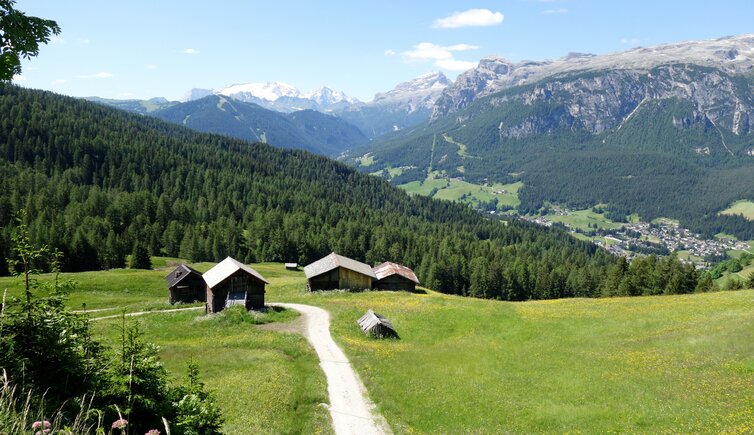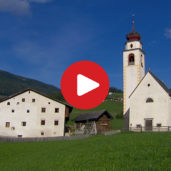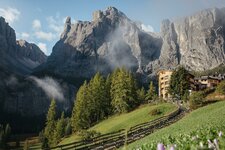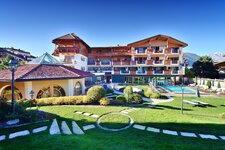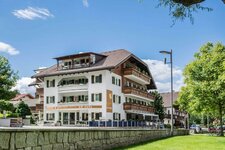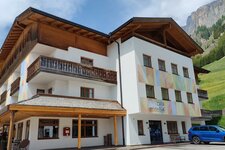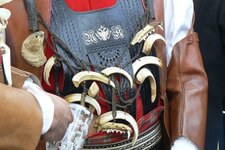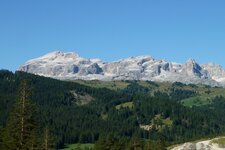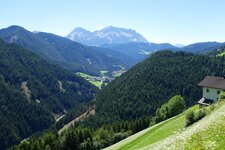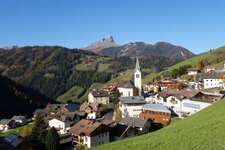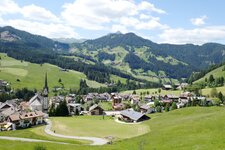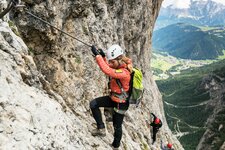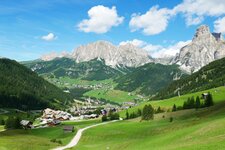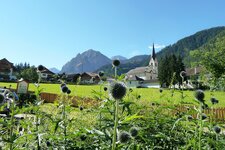This 35 km long valley, also known as Gadertal, extends from the Val Pusteria valley to the mighty Sella Group
Image gallery: Val Badia valley
The Val Badia valley, often referred as the "Heart of the Dolomites", is one of the Dolomite valleys in which the Ladin language is still spoken. Its German name, Gadertal, derives from the river that runs through the valley, the Rio Gadera, whereas Badia (Val Badia) is one of the five municipalities, made up of a total of 15 hamlets: Corvara, Badia, La Val, San Martino in Badia and Marebbe.
At the head of the valley, from a geographic viewpoint in the southern part of the Val Badia valley, there's the 16 km long Alta Badia, that's to say the Upper Val Badia. Presumably the valley has already been inhabited in pre-Roman times by a indigenous population. One of the reasons why the Ladin language has been preserved here, is its largely isolated position. Surrounded by mighty peaks, such as Mt. Lagazuoi (2,835 m a.s.l.), Mt. Piz Boè (3,152 m a.s.l.) and Mt. Sasso di Santa Croce (2,907 m a.s.l.), the valley has become a popular summer resort and skiing destination.
As San Martino in Badia (St. Martin in Thurn) is considered to be the cradle of Ladin culture, there is also the Museum Ladin Ćiastel de Tor in the eponymous castle. The museum was inaugurated in 2001 in this majestic building, which dates back to 1230 AD. It gives an interesting insight into the history and present situation of the valley as well as its culture and language.
